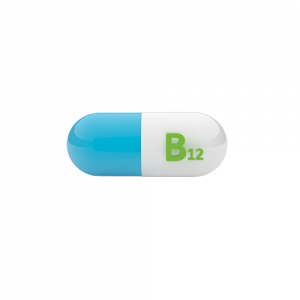Diabetes Risk Blood Test (HBA1C)
$79.00
HbA1c, also known as glycated hemoglobin, is a blood test that provides an estimate of your average blood sugar levels over the past two to three months. It measures the percentage of hemoglobin (a protein in red blood cells) that is bound to glucose.
The HbA1c test is commonly used to assess long-term glycemic control in individuals with diabetes.
Analytes in this test: Glycated Hemoglobin, HbA1c (1 analyte).
Description
About the Test
HbA1c (Glycated hemoglobin) is a blood test that measures the average blood sugar level over the past two to three months. The test provides a more long-term view of a person’s blood sugar control than a simple blood glucose test, which only measures the blood sugar level at a single point in time.
HbA1c is formed when glucose in the blood binds to hemoglobin, a protein in red blood cells that carries oxygen throughout the body. The higher a person’s blood sugar level over time, the more glucose is bound to hemoglobin, and the higher the HbA1c level will be.
A HbA1c test is used to monitor diabetes control and to diagnose diabetes. The test is typically done two to four times a year for people with diabetes. Normal HbA1c levels for people without diabetes are typically below 5.7%, while levels for people with diabetes are typically higher, between 7% and 8%. A healthcare provider can use the results of a HbA1c test to adjust treatment and make recommendations for lifestyle changes as needed.
Overview of HbA1C Blood Test
HbA1c (Glycated hemoglobin) is a blood test that measures the average blood sugar level over the past two to three months. The test provides a more long-term view of a person’s blood sugar control than a simple blood glucose test, which only measures the blood sugar level at a single point in time.
HbA1c is formed when glucose in the blood binds to hemoglobin, a protein in red blood cells that carries oxygen throughout the body. The higher a person’s blood sugar level over time, the more glucose is bound to hemoglobin, and the higher the HbA1c level will be.
A HbA1c test is used to monitor diabetes control and to diagnose diabetes. The test is typically done two to four times a year for people with diabetes. Normal HbA1c levels for people without diabetes are typically below 5.7%, while levels for people with diabetes are typically higher, between 7% and 8%. A healthcare provider can use the results of a HbA1c test to adjust treatment and make recommendations for lifestyle changes as needed.
Analytes Measured in HbA1C Test
1 Analyte
Hemoglobin A1C (HbA1C)
Hemoglobin A1C
Glycated hemoglobin, also known as HbA1c, glycohemoglobin, hemoglobin A1c, A1C, is a form of hemoglobin (Hb) that is chemically linked to a sugar. Most monosaccharides, including glucose, galactose and fructose, spontaneously (i.e. non-enzymatically) bond with hemoglobin when present in the bloodstream.
HbA1c is measured primarily to determine the three-month average blood sugar level and can be used as a diagnostic test for diabetes mellitus and as an assessment test for glycemic control in people with diabetes.[5] The test is limited to a three-month average because the average lifespan of a red blood cell is four months. Since individual red blood cells have varying lifespans, the test is used as a limited measure of three months. Normal levels of glucose produce a normal amount of glycated hemoglobin. As the average amount of plasma glucose increases, the fraction of glycated hemoglobin increases in a predictable way. In diabetes, higher amounts of glycated hemoglobin, indicating poorer control of blood glucose levels, have been associated with cardiovascular disease, nephropathy, neuropathy, and retinopathy.
Test Results
A1C is a blood test for type 2 diabetes and prediabetes. It measures your average blood glucose, or blood sugar, level over the past 3 months. Doctors may use the A1C alone or in combination with other diabetes tests to make a diagnosis. They also use the A1C to see how well you are managing your diabetes. This test is different from the blood sugar checks that people with diabetes do every day.
Your A1C test result is given in percentages. The higher the percentage, the higher your blood sugar levels have been:
- A normal A1C level is below 5.7%
- Prediabetes is between 5.7 to 6.4%. Having prediabetes is a risk factor for getting type 2 diabetes. People with prediabetes may need retests every year.
- Type 2 diabetes is above 6.5%
If you have diabetes, you should have the A1C test at least twice a year. The A1C goal for many people with diabetes is below 7. It may be different for you. Ask what your goal should be. If your A1C result is too high, you may need to change your diabetes care plan.
History Of A1C
Hemoglobin A1c was first separated from other forms of hemoglobin by Huisman and Meyering in 1958 using a chromatographic column. It was first characterized as a glycoprotein by Bookchin and Gallop in 1968. Its increase in diabetes was first described in 1969 by Samuel Rahbar et al. The reactions leading to its formation were characterized by Bunn and his coworkers in 1975.
The use of hemoglobin A1c for monitoring the degree of control of glucose metabolism in diabetic patients was proposed in 1976 by Anthony Cerami, Ronald Koenig and coworkers.
Specimen Requirements
- Lavender top tube of blood
Turn Around Time
5 to 24 hours
Price For Test
Price: $79







